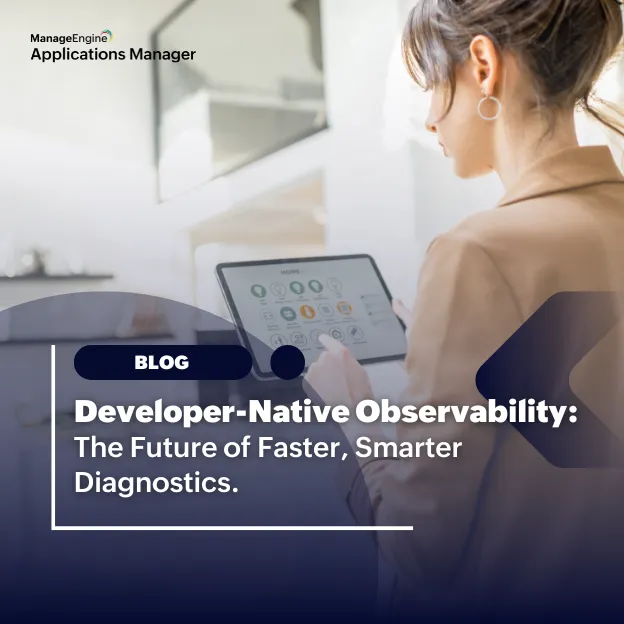The problem: Why current observability still falls short for developers
Despite all the buzz, most application observability tools today aren't truly built for developers.
- Too much data, not enough insight: You get floods of metrics, traces, and logs, but developers often have to "hunt" endlessly for the answers they need.
- Ops-centric design: Many tools are designed primarily for SREs or infrastructure engineers, not for the people actually writing business logic or shipping new product features.
- No clear action paths: Getting an alert like "High CPU detected" isn't helpful unless it directly points to the problematic method, service, or query in your code.
- Still too reactive: Most observability tooling only kicks in after an incident happens, leaving developers constantly in firefighting mode.
The shift: Developer-centric observability
The next frontier of observability isn't just about prettier dashboards or faster alerts. It's about deep, contextual, developer-native observability that:
- Embeds itself directly within the development workflow.
- Provides actionable diagnostics at the code level.
- Integrates with CI/CD to prevent issues before they ever reach production.
- Uses automation and AI to surface not just symptoms, but the actual root causes.
This isn't just theoretical. The tools and patterns for this shift are emerging right now.
Always-on profiling — Your underused superpower
Ask most developers to debug a performance issue, and they'll usually reach for logs or traces. But here's a secret: they're missing a huge opportunity by not using continuous profiling.
What is continuous profiling?
It's the practice of running always-on, low-overhead profilers directly in production.
These constantly capture data on:
- CPU usage per function
- Memory allocations
- Lock contentions
- I/O bottlenecks
Why it's a game-changer:
- You get a continuous "flame graph" showing exactly which functions are consuming resources.
- It works without you needing to know where to look beforehand – profiling answers "where's the problem?" before you even ask.
- No manual instrumentation is required.
Tools to explore:
- Pyroscope and Parca (open-source, eBPF-based)
- Grafana Phlare (integrated with Grafana Cloud)
This approach is inherently developer-first. You get direct, code-level bottleneck insights that can be resolved with a few code commits – no complex tracing setups needed.
Production debugging without fear
We've all been there: production is on fire, logs aren't enough, and all you want is to attach a debugger. The good news? Now you can—safely.
Emerging solutions:
- Rookout: This dynamic instrumentation tool lets you insert temporary breakpoints directly into live production code.
- eBPF-based tools like Pixie or Cilium allow you to trace Linux syscalls and network traffic, all with zero downtime.
Why developers love this:
- Fetch stack traces, variables, and execution paths – without redeploying or SSH-ing into servers.
- Get instant feedback loops during critical incidents.
This fundamentally flips the traditional observability model from passive alerting to active interrogation. You can now ask precise questions of live systems, on demand.
AI-assisted root cause analysis (RCA)
As systems grow exponentially more complex, relying on manual incident response simply isn't scalable anymore.
Enter AI-driven observability:
- Platforms with modern APM like ManageEngine Applications Manager now offer automated RCA.
- These tools don't just detect anomalies; they automatically correlate logs, metrics, and traces, and even suggest the most likely root causes.
For example, ManageEngine Applications Manager's AI features automatically surface:
- Which code changes, deployments, or infrastructure events actually caused a regression.
- Visual causal graphs that illustrate incident chains.
- Contextual remediation steps, sometimes even recommending specific fixes.
This means incidents shift from "Why is this happening?" to "Here's what broke and where," dramatically cutting down your Mean Time To Resolution (MTTR).
Observability-driven automation and self-healing
The ultimate future isn't just about detecting problems – it's about automatically fixing them.
Emerging patterns:
- Auto-rollback pipelines: Your CI/CD pipeline automatically halts or rolls back deployments based on Service Level Objective (SLO) breaches.
- Auto-scaling + auto-tuning: Systems self-adjust resources based on observed demand and performance without manual intervention.
- Self-healing playbooks: Automated workflows are triggered directly by observability anomalies to fix issues.
For example, ManageEngine Applications Manager already enables such automations:
- Threshold-based actions (like restarting a service or scaling out resources).
- Automatic workflows (clearing caches, scaling resources, notifying development teams).
- Integration with CI/CD tools for automated rollback or safe canary promotion.
This isn't just for operations teams anymore; developers can now codify remediation as code right alongside their new features.
Beyond the "Three Pillars": The new observability model
Traditional observability often talks about metrics, logs, and traces. While foundational, that's simply not enough for today's modern developers.
Here's how the observability model is evolving:











